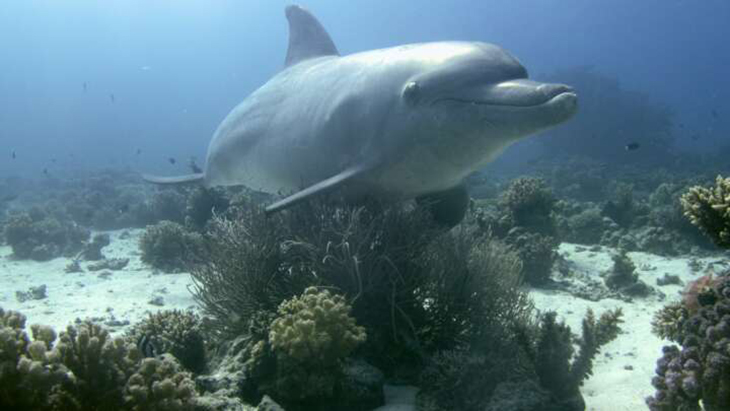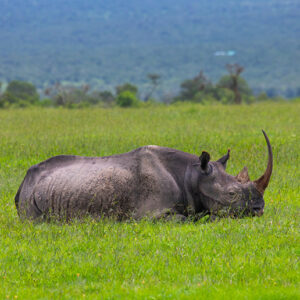
Humans are big into self-care. They have daily routines to keep their skin soft and smooth. They say that there are many characteristics that set people apart from the rest of the members in the animal kingdom, but there may be another creature that comes close to their intelligence.
Dolphins, like humans, are social creatures. They enjoy swimming in groups and have been known to communicate with each other in unique ways. Now, it’s been discovered that they also have their own self-care routine, and it has many fascinated.
A shocking footage was caught and this showed how dolphins rubbed their bodies against a particular coral. The researchers had come up with several theories regarding this and one possibility is that they do this to extract the healing elements within the coral, ones that help keep their skin healthy.
The researchers that observed them say that this is their version of taking a shower after they sleep. For people, when they see a rash appear on their skin, they might go to the nearest pharmacy and purchase an ointment for this. Like people, these Indo-Pacific bottlenose dolphins aren’t immune to suffering from a few skin conditions. The latest study shows how these mammals have come up with their own method of self-medication. They do this by lining up (nose-to-tail) and rub themselves against the corals found on the seafloor.
Researchers looked into this and discovered that some corals have medicinal properties. Hence, these dolphins make use of the invertebrates as medication for the skin condition they may have.
Co-lead author and a wildlife biologist at the University of Zurich in Switzerland, Dr. Angela Ziltener, first noticed how these dolphins rubbed against coral in the Northern Red Sea, off the coast of Egypt. She had began her observations 13 years ago. She and her team of researchers took note of how they had carefully selected the corals from which they rubbed against. They wanted to understand the reasons behind this.
“I hadn’t seen this coral rubbing behavior described before, and it was clear that the dolphins knew exactly which coral they wanted to use,” Dr. Ziltener said. “I thought, ‘There must be a reason.’”
Most dolphin research that were made in the past had been conducted above the water. Luckily, Dr. Ziltener is a certified diver. She made the decision to study the dolphins from up close and underneath the ocean where much of the activity took place.
She didn’t jump into the research very quickly, First, she needed to earn their trust. She did this slowly and she eventually succeeded because she saw that the dolphins weren’t frightened by the large bubbles produced by the tank of air she used. The pod had eventually gotten used to her and welcomed her into the fold. She was able to visit them regularly. As they took a closer look at the corals, they were able to identify what these were from the samples they collected.
Dr. Ziltener and her team tested the samples of the corals and discovered that by repeatedly rubbing themselves against these, the Indo-Pacific bottlenose dolphins had managed to agitate the tiny polyps that had been part of the coral community. In response to the rub, the invertebrates released mucus that came into contact with the dolphins’ skin.
The researchers also wanted to understand the properties of the mucus that came from the corals. With the samples that came from gorgonian, leather, and sponge corals, these were carefully studied and analyzed using the latest equipment. The findings they came up with had been published in the journal iScience/Cell Press.
Study lead author Professor Gertrud Morlock and her team discovered that the mucus had 17 active metabolites that exhibited antibacterial, antioxidative, hormonal, and toxic activities. They discovered these bioactive compounds and they were led to believe that the mucus of the corals and sponges have the ability to regulate the skin’s microbiome as well as treat infections.
“Repeated rubbing allows the active metabolites to come into contact with the skin of the dolphins,” Professor Morlock, an analytical chemist and food scientist at Justus Liebig University in Germany, had stated. He added, “These metabolites could help them achieve skin homeostasis and be useful for prophylaxis or auxiliary treatment against microbial infections.”
The corals live in reefs that are considered important places for the local dolphin populations. These are spots for them to rest and enjoy.
He said, “Many people don’t realize that these coral reefs are bedrooms for the dolphins, and playgrounds as well.”
In between naps, Dr. Ziltener noticed how these dolphins wake up to perform the coral rubbing routine that they’ve often observed.
According to the doctor, “It’s almost like they are showering, cleaning themselves before they go to sleep or get up for the day.”
Watch the attached video.
What are your thoughts? Please comment below and share this news!
True Activist / Report a typo


